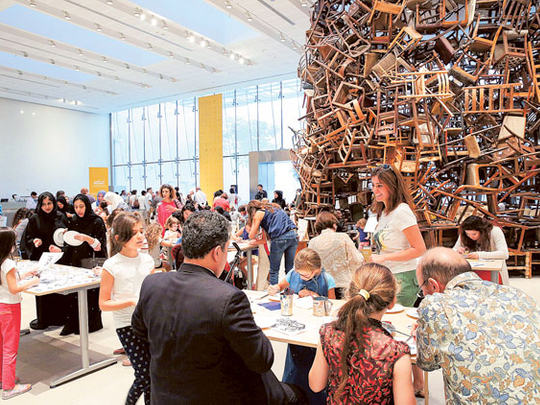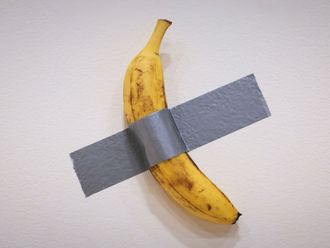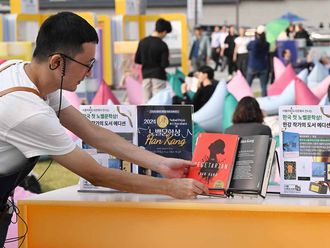
Abu Dhabi: After 100 days of showcasing some of history’s most important artefacts, the History of the World in 100 Objects exhibition will finally draw to a close on August 1.
Since its launch on April 23, the gallery has taught visitors about the origins of humanity with items dating as far back as 1.7 million years ago. It has also given guests a glimpse into some of the iconic moments that have shaped the history of the world.
The exhibition represents some of the themes that will be seen at the Zayed National Museum, which is expected to open its doors in 2016.
Running in parallel with the exhibition, the Tourism and Culture Authority Abu Dhabi (TCA-AD) organised 72 workshops attended by more than 4,000 participants.
Salama Al Shamsi, project manager, Zayed National Museum said in a TCA-AD statement: “Bridging centuries and geographical borders, the exhibition gave visitors the opportunity to witness how humans have shaped the world, and been shaped by it, through an exploration of some of the world’s most iconic objects.”
In addition to the century-old items, such as the Japanese Jomon pots which enabled the Jomons to cook food such as stew, a number of modern, everyday objects are also on display.
These include credit cards in addition to a UAE-created vehicle that is operated by hand, to cater to the needs of the physically impaired.
“The success and popularity of A History of the World in 100 Objects has given us great insight into the kind of content that interests UAE audiences, and therefore, great belief in the content that will be celebrated by Zayed National Museum, where similar themes will be addressed when telling our story and our own history. With the exhibition drawing to a close on August 1, I would urge anyone who has not yet visited to take some time to enjoy it,” Al Shamsi added.
The Zayed National Museum will be open to the public as a celebration of the seven emirates’ unification under the UAE’s founding father, the late Shaikh Zayed Bin Sultan Al Nahyan.
The museum will also allow guests to better understand their world through a collection of artefacts from previous and current cultures in the Middle East.











